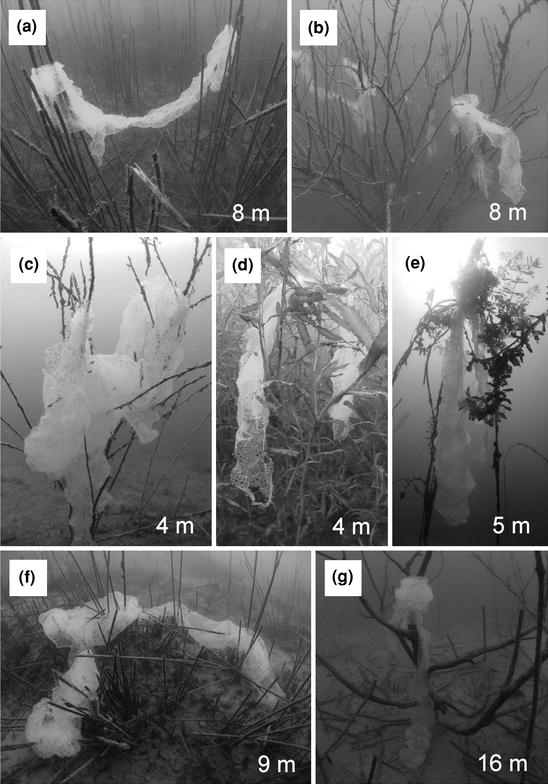 The distribution of egg strands of perch Perca fluviatilis was studied in relation to water depth and spawning substrate during late April and early May 2007 in Chabařovice Lake, Czech Republic, using SCUBA divers and parallel transects. The depth distribution of egg strands differed significantly between the two sampling dates, being much deeper in early May compared to late April. Perch used at least seven different spawning substrates of which the most important were curly pondweed Potamogeton crispus, worm weed Artemisia sp. and common reed Phragmites communis. However, while living submerged vegetation, although more abundant, was generally avoided, dead submerged vegetation was strongly preferred. It appears that dead vegetation is an ideal spawning substrate for perch since placement of the egg strands over those hard, complex three-dimensional structures ensures that the eggs remain well oxygenated 24 hours a day. Factors with significant influence on the distribution of egg strands were as follows (in order of decreasing influence): depth of deposition, type of spawning substrate, date of spawning and temperature at the depth of deposition.
The distribution of egg strands of perch Perca fluviatilis was studied in relation to water depth and spawning substrate during late April and early May 2007 in Chabařovice Lake, Czech Republic, using SCUBA divers and parallel transects. The depth distribution of egg strands differed significantly between the two sampling dates, being much deeper in early May compared to late April. Perch used at least seven different spawning substrates of which the most important were curly pondweed Potamogeton crispus, worm weed Artemisia sp. and common reed Phragmites communis. However, while living submerged vegetation, although more abundant, was generally avoided, dead submerged vegetation was strongly preferred. It appears that dead vegetation is an ideal spawning substrate for perch since placement of the egg strands over those hard, complex three-dimensional structures ensures that the eggs remain well oxygenated 24 hours a day. Factors with significant influence on the distribution of egg strands were as follows (in order of decreasing influence): depth of deposition, type of spawning substrate, date of spawning and temperature at the depth of deposition.
Keywords: aquatic vegetation; Chabařovice Lake; common reed; curly pondweed; Eurasian water milfoil; Myriophyllum spicatum; Phragmites communis; Potamogeton crispus; SCUBA diving
